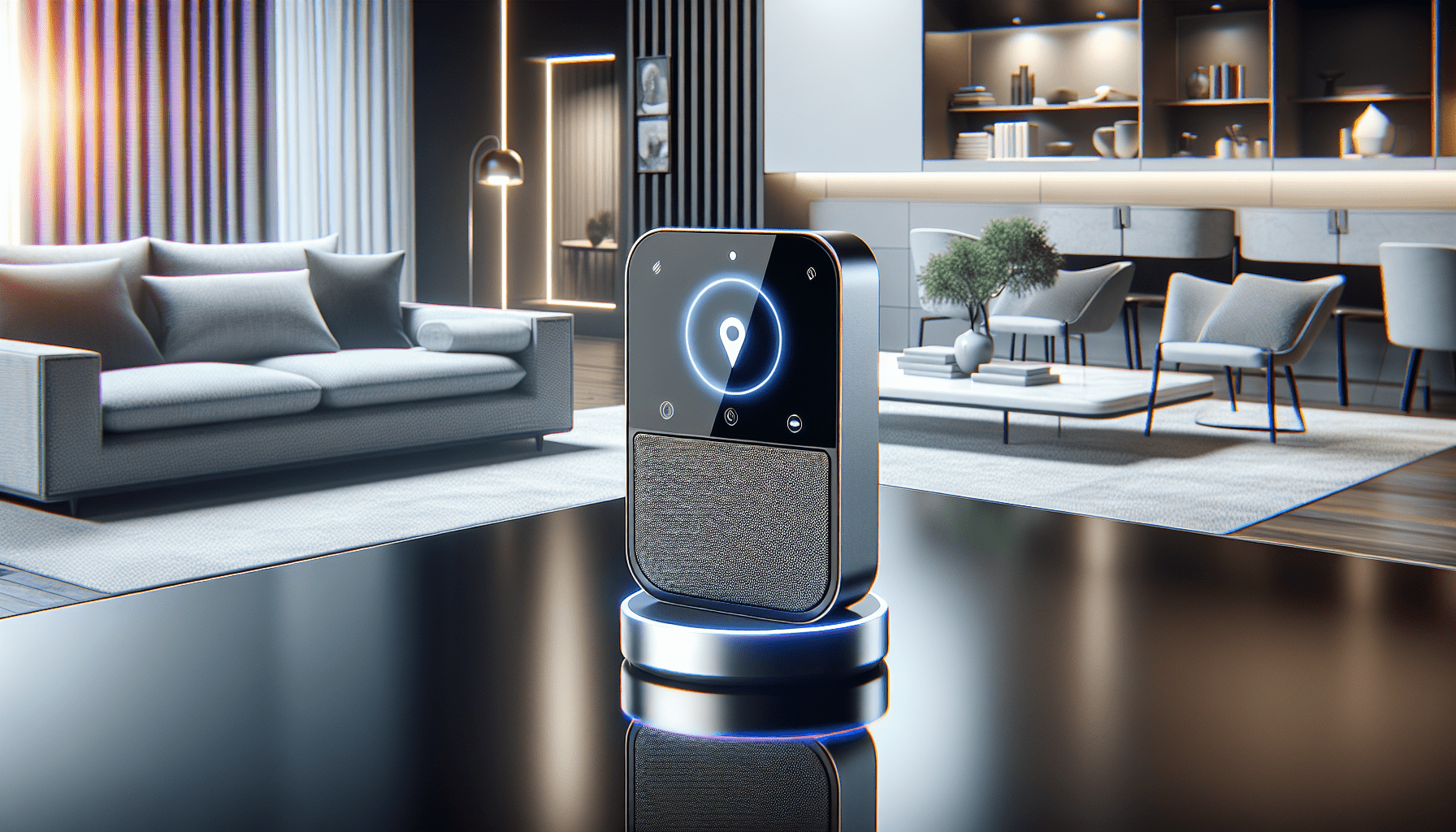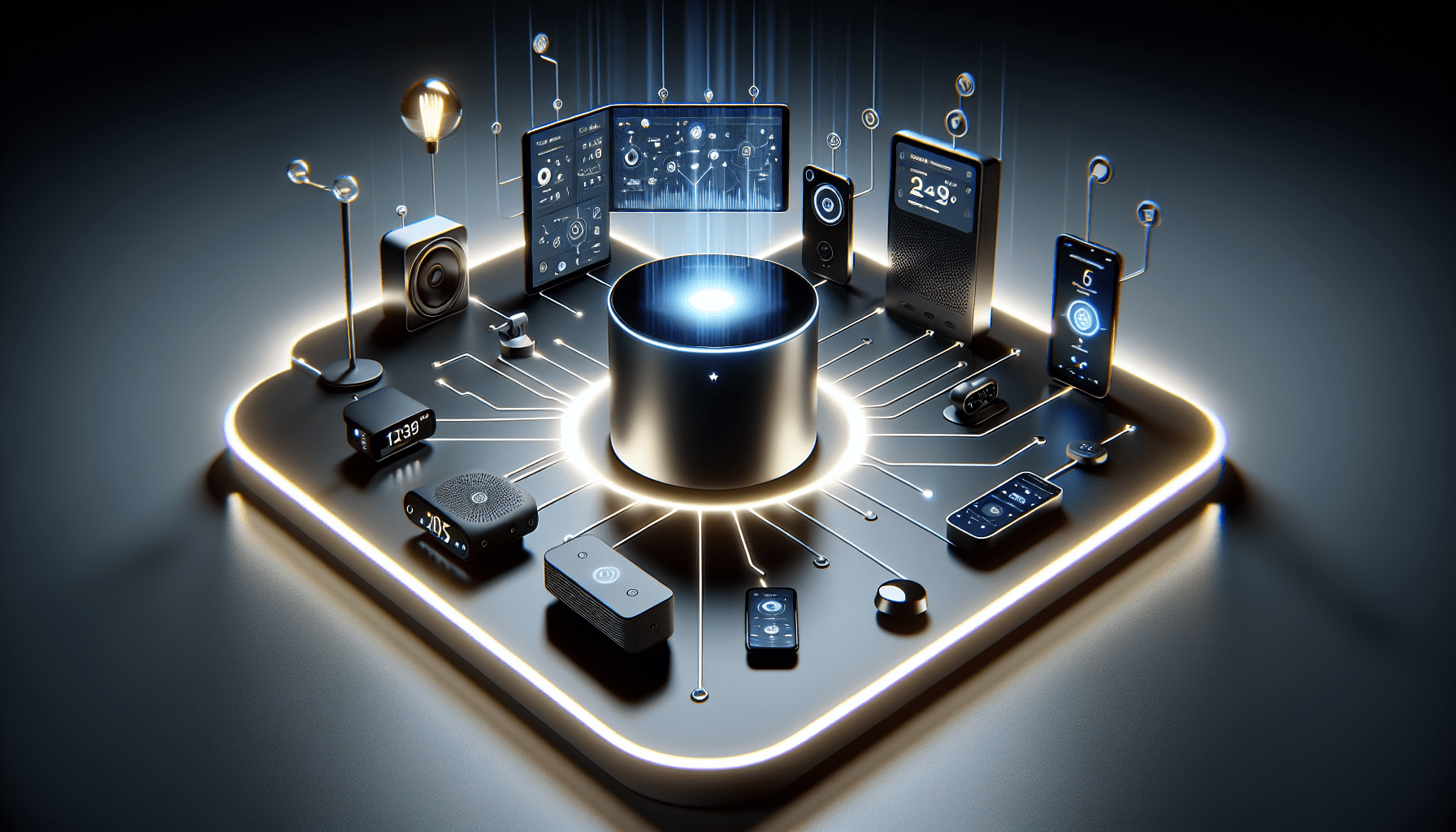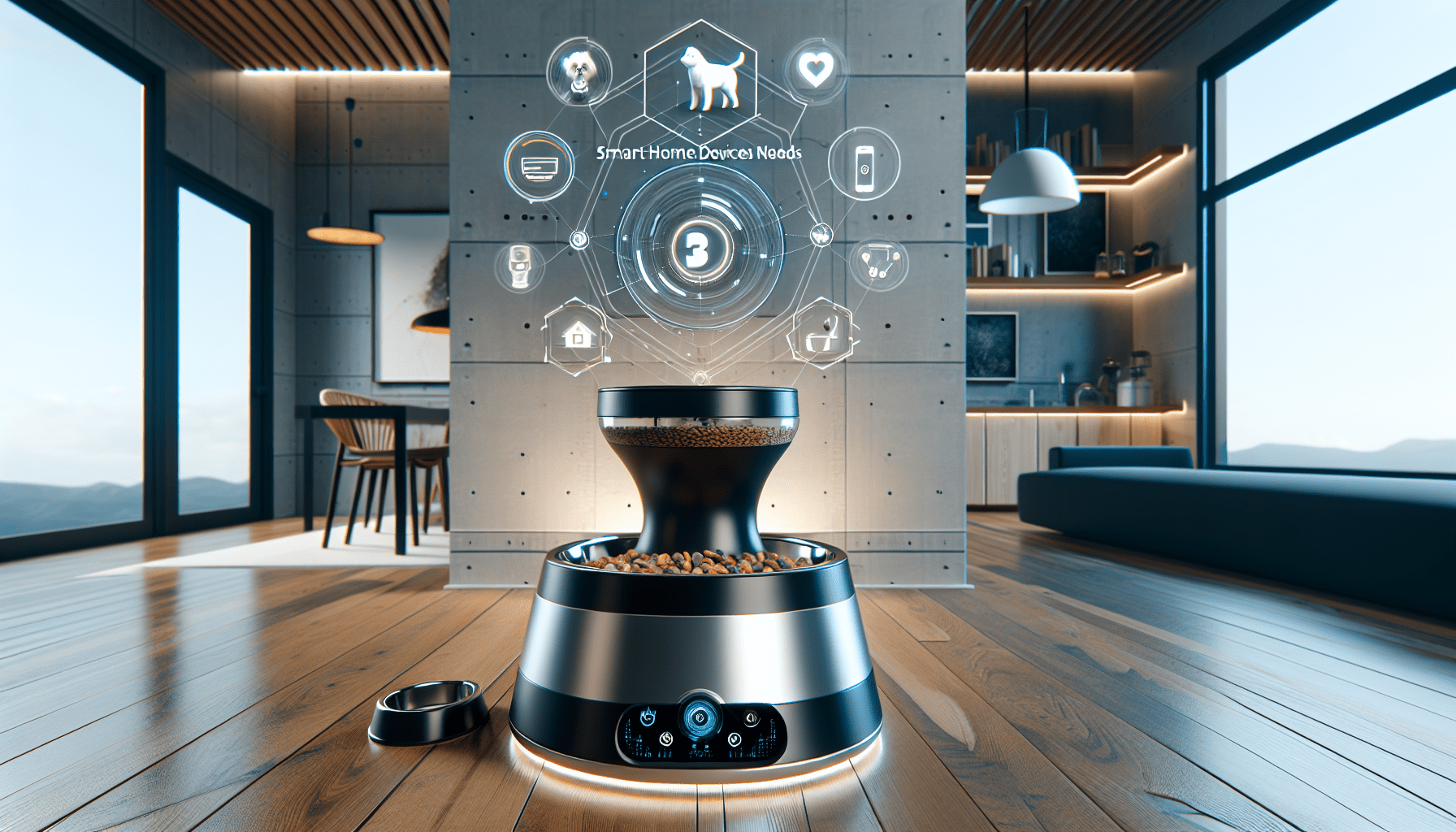Imagine a world where your home anticipates your every need, creating the ultimate atmosphere of convenience and comfort. Now, imagine that this future is not so far-fetched, but actually within reach. The potential of smart home automation is boundless, revolutionizing the way we live and interact with our homes. From controlling the lights and temperature with a simple voice command to managing your home security remotely, the possibilities are endless. In this article, we will explore the exciting potential of smart home automation and how it is transforming the way we experience and personalize our living spaces. Get ready to step into a world where your home is not just smart, but intelligent.
Advantages of Smart Home Automation
Increased convenience
Smart home automation offers increased convenience by allowing you to control various aspects of your home with just a few taps on your smartphone or through voice commands. With the integration of smart devices, you can easily manage your home’s lighting, temperature, security, and even appliances. Imagine being able to adjust the thermostat without getting up from your cozy couch or turning off the lights in another room without having to physically go there. Smart home automation eliminates these small inconveniences and makes your life easier.
Energy efficiency
One of the significant advantages of smart home automation is its ability to enhance energy efficiency. Smart devices, such as smart thermostats, can learn your daily routines and adjust the temperature accordingly, ensuring that your home is neither too hot nor too cold when you’re not there. Smart lighting enables you to control and automate the lighting in your home, so you can turn off lights when not needed and save on electricity bills. By integrating energy-efficient appliances and monitoring your energy usage, smart home automation helps you reduce your environmental impact and lower energy costs.
Enhanced security
Smart home automation offers enhanced security by providing you with real-time monitoring and control of your home’s security systems. Smart security cameras, door locks, and alarm systems enable you to keep an eye on your property even when you’re away. You can receive instant alerts on your smartphone if any suspicious activity is detected, allowing you to take immediate action. Additionally, you can remotely control your door locks, granting access to trusted individuals or locking them out in case of emergency. With this level of control and monitoring, you can have peace of mind knowing that your home is secure.
Remote control
Another significant advantage of smart home automation is the ability to control your home’s devices and systems remotely. Whether you forgot to turn off the lights before leaving for work or want to adjust the temperature before arriving home, you can easily do so using your smartphone or other connected devices. This remote control capability offers convenience and flexibility, allowing you to manage your home from anywhere in the world. Whether you’re at the office, on vacation, or simply lying in bed, you have complete control over your home’s automation.
Popular Smart Home Automation Devices
Smart thermostats
Smart thermostats are one of the most popular smart home automation devices. These devices provide advanced temperature control features, allowing you to program and monitor the temperature in your home remotely. By learning your behavior and preferences, smart thermostats can automatically adjust the temperature to optimize your comfort while saving energy. In addition, some smart thermostats can integrate with other smart devices, such as occupancy sensors and weather forecasts, to further enhance energy efficiency and convenience.
Smart lighting
Smart lighting systems allow you to control and automate the lighting in your home. With smart bulbs, switches, and dimmers, you can easily adjust the brightness, color, and timing of your lights. You can create custom lighting scenes for different activities or moods, such as a cozy movie night or a vibrant party. Smart lighting can be controlled through your smartphone, voice commands, or even integrated with other devices like motion sensors. This not only adds convenience but also helps save energy by turning off lights automatically when not needed.
Smart security systems
Smart security systems provide comprehensive protection for your home. These systems can include smart cameras, door/window sensors, motion detectors, and alarm systems. With smart security cameras, you can monitor your home in real-time and receive alerts for suspicious activities. Door/window sensors and motion detectors can trigger an alarm or send notifications if unauthorized entry is detected. Some smart security systems also offer professional monitoring services, providing an extra layer of security and peace of mind.
Smart speakers
Smart speakers, such as Amazon Echo or Google Home, have gained immense popularity in recent years. These devices not only serve as a hub for controlling other smart devices in your home but also offer a wide range of functionalities. With built-in voice assistants like Alexa or Google Assistant, you can ask questions, play music, set timers, make calls, and even control compatible smart home devices through voice commands. Smart speakers provide a seamless and intuitive way to interact with your smart home automation system.
Integration and Compatibility
Interoperability between devices
Interoperability between smart home devices is essential for a seamless and integrated experience. With the wide variety of smart devices available in the market, it is crucial to ensure that they can communicate and work together effectively. Standards such as Zigbee, Z-Wave, and Wi-Fi have been developed to enable interoperability between devices from different manufacturers. These standards allow devices to connect and communicate with each other, regardless of the brand or model. Interoperability ensures that you can create a cohesive smart home ecosystem, where devices can interact and automate tasks based on specific triggers or conditions.
Smart home hubs
Smart home hubs are central control units that enable the integration and control of multiple smart devices. These hubs act as a bridge between different devices, allowing them to communicate and work together. By connecting various smart devices to a centralized hub, you can control and monitor them through a single interface or app. Smart home hubs often use protocols like Zigbee or Z-Wave to enable communication with a wide range of devices. Some hubs also support voice control assistants, making it even more convenient to manage your smart home automation system.
Voice control assistants
Voice control assistants, such as Amazon Alexa or Google Assistant, have revolutionized the way we interact with our smart home devices. These assistants utilize natural language processing and speech recognition technologies to understand and respond to voice commands. By integrating voice control assistants with your smart home devices, you can control them by simply speaking commands. Whether you want to turn on/off lights, adjust the temperature, or play music, voice control assistants offer a hands-free and intuitive way to interact with your smart home automation system.
Emerging Technologies in Smart Home Automation
Artificial intelligence (AI)
Artificial intelligence plays a crucial role in the advancement of smart home automation. AI technologies enable devices to learn from user behavior, adapt to preferences, and make intelligent decisions. With AI-powered smart home automation, devices can analyze data, predict patterns, and automate tasks based on individual needs. For example, smart thermostats can learn your temperature preferences and adjust the temperature automatically, ensuring optimal comfort and energy efficiency. AI also enables devices to detect and respond to anomalies, providing enhanced security and safety.
Internet of Things (IoT)
The Internet of Things refers to the network of interconnected devices that communicate and share data with each other. In the context of smart home automation, IoT enables devices to connect and exchange information, creating a unified system. IoT allows you to control and monitor your smart home devices remotely through the internet. For example, you can check the live feed from your security cameras, adjust the lighting, or receive notifications on your smartphone wherever you are. IoT expands the capabilities of smart home automation by enhancing connectivity and accessibility.
Machine learning
Machine learning is a subset of artificial intelligence that focuses on algorithms and models that enable systems to learn and improve from data. In the context of smart home automation, machine learning can assist in optimizing energy usage, predicting user behavior, and automating tasks. By analyzing patterns and data, machine learning algorithms can identify trends, preferences, and anomalies, allowing devices to adapt and make informed decisions. For example, smart appliances can learn your usage patterns and optimize energy consumption accordingly, leading to increased efficiency and cost savings.
Challenges and Concerns
Data privacy and security
As smart home automation relies heavily on the collection and analysis of personal data, data privacy and security are major concerns. With interconnected devices and cloud-based services, there is a potential risk of unauthorized access or data breaches. It is essential for manufacturers and service providers to implement robust security measures, such as encryption and user authentication, to protect sensitive data. Additionally, users must also take steps to secure their smart home devices, such as regularly updating firmware, setting strong passwords, and monitoring access permissions.
Reliability and system failures
While smart home automation offers numerous benefits, system failures or technical glitches can disrupt the seamless experience. Connectivity issues, software bugs, or compatibility problems can lead to unreliable performance or even complete system failures. To mitigate these concerns, manufacturers need to focus on developing robust and reliable systems. Regular software updates and maintenance are crucial to address vulnerabilities and ensure optimal performance. Additionally, user awareness and technical support play a significant role in troubleshooting and resolving any issues that may arise.
High cost of implementation
The initial cost of implementing a smart home automation system can be a significant barrier for many consumers. Smart devices, such as thermostats, security cameras, and speakers, can be more expensive than their traditional counterparts. Additionally, the cost of installation, integration, and maintenance may add to the overall investment. However, it is worth considering the long-term benefits and potential cost savings associated with smart home automation. Energy efficiency, improved security, and convenience can result in reduced utility bills, lower insurance premiums, and increased property value.
Compatibility issues
Compatibility issues can arise when integrating different smart home devices from different manufacturers. Not all devices use the same communication protocols or standards, which can limit interoperability. Before investing in smart home devices, it is essential to ensure compatibility with your existing system or hub. Manufacturers are working towards developing universal standards and protocols to address this issue. However, it is advisable to research and choose devices that are compatible with your preferred ecosystem or hub to ensure seamless integration and avoid frustration.
Impact of Smart Home Automation on Daily Life
Improved comfort and quality of life
Smart home automation enhances comfort and quality of life by automating routine tasks and personalizing your living environment. From adjusting the temperature to dimming the lights, smart devices can adapt to your preferences and create a comfortable ambiance. The ability to control your home through voice commands or smartphone apps adds convenience and eliminates small inconveniences. By freeing up time and reducing manual effort, smart home automation allows you to focus on what truly matters – spending time with loved ones, pursuing hobbies, or simply relaxing.
Time and energy savings
One of the most significant impacts of smart home automation is the time and energy savings it offers. With automation and remote control capabilities, you can efficiently manage your home without the need for manual intervention. No more wasting time searching for misplaced keys or running back home to turn off appliances. Smart devices can handle these tasks, saving you time, energy, and effort. Furthermore, energy-efficient features and automation algorithms help optimize energy usage, leading to lower utility bills and reducing your environmental footprint.
Increased accessibility for people with disabilities
Smart home automation has the potential to greatly benefit individuals with disabilities or limited mobility. By providing remote control and automation capabilities, smart devices empower individuals to independently manage their homes. Voice control assistants and smart home hubs enable hands-free operation, eliminating the need for physical interactions. From adjusting the lighting to unlocking doors, individuals with disabilities can navigate and control their living spaces more comfortably and efficiently. Smart home automation fosters inclusivity and independence for people with disabilities, enhancing their overall quality of life.
Smart Home Automation and the Environment
Reduced energy consumption
Smart home automation contributes to reducing energy consumption and minimizing environmental impact. Energy-saving features, such as automated lighting controls and smart thermostats, ensure that energy is used efficiently and wastage is minimized. With occupancy sensors and machine learning algorithms, smart devices can detect when a room is unoccupied and adjust the temperature or turn off lights to conserve energy. By optimizing energy usage, smart home automation helps reduce greenhouse gas emissions and promotes sustainability.
Smart grid integration
Smart home automation can also integrate with smart grid technologies, enabling a more efficient and reliable energy distribution system. Through two-way communication, smart home devices can respond to signals from the grid and adjust their energy consumption based on demand. This demand-response functionality helps balance energy supply and demand, reducing strain on the grid during peak periods. Smart grid integration also allows homeowners to take advantage of time-of-use pricing, where electricity rates are lower during off-peak hours, further incentivizing energy efficiency.
Sustainability benefits
In addition to energy savings, smart home automation offers several sustainability benefits. By reducing the need for physical interactions and optimizing resources, smart devices help minimize waste and conserve valuable resources. For example, smart irrigation systems can monitor soil moisture levels and only water the plants when necessary, reducing water consumption. Additionally, remote monitoring and control of appliances, such as refrigerators or washing machines, enable efficient usage and maintenance, leading to increased lifespan and reduced electronic waste. Smart home automation promotes sustainable living by minimizing resource consumption and promoting eco-friendly practices.
Future Trends in Smart Home Automation
Expansion of voice control capabilities
Voice control assistants have already become an integral part of smart home automation. In the future, we can expect further advancements in voice control capabilities. Natural language processing and speech recognition technologies will continue to evolve, allowing voice control assistants to understand more complex commands and queries. This expansion of voice control capabilities will contribute to a more seamless and intuitive smart home experience, where you can have more natural conversations with your devices and systems.
Greater personalization and customization
As smart home automation becomes more prevalent, personalization and customization options will continue to expand. Smart devices will become more adaptable to individual preferences, learning from user behavior and adjusting settings accordingly. From personalized lighting scenes to customized temperature schedules, smart home automation will create tailored environments that suit your specific needs and preferences. This level of personalization will enhance the overall user experience and contribute to a more comfortable and enjoyable living space.
Integration with smart cities
The integration of smart home automation with smart cities will be a significant trend in the future. As cities become more connected and smarter, the potential for synergy between smart homes and smart city infrastructure becomes apparent. For example, smart home devices can receive real-time data from sensors installed in the city, such as weather conditions or traffic congestion, to optimize their operation. This integration can lead to more efficient resource management, enhanced security, and improved quality of life for residents. Smart homes will be an integral part of the larger intelligent ecosystem that smart cities strive to achieve.
Consumer Adoption and Market Growth
Increasing popularity and demand
Smart home automation has witnessed significant growth in popularity and demand in recent years. As awareness increases and consumers experience the benefits firsthand, more individuals are embracing smart home automation. The convenience, energy efficiency, and security advantages have made smart homes a desirable choice for many. As the technology becomes more mainstream and affordable, consumer adoption is expected to continue growing at a rapid pace.
Key market players and competition
The market for smart home automation is highly competitive, with several key players vying for market share. Companies like Google, Amazon, Apple, and Samsung have developed their ecosystem of smart devices and platforms. These tech giants, along with traditional players in the home automation industry, are continually innovating and expanding their product offerings. Competition among these players ensures rapid advancements in technology, increased affordability, and improved user experience for consumers.
Projected market size and growth
Smart home automation is projected to experience substantial growth in the coming years. According to market research reports, the global smart home automation market size is expected to reach billions of dollars by 2027. Factors driving this growth include increasing consumer awareness, advancements in technology, rising demand for energy efficiency, and the growing popularity of connected devices and IoT. The market is also expected to benefit from the integration of smart home automation with emerging technologies like AI and machine learning.
Conclusion
The future of smart home automation holds immense potential for transforming the way we live. The advantages of increased convenience, energy efficiency, enhanced security, and remote control make smart homes an appealing choice for homeowners. While there are challenges and concerns, such as data privacy and system reliability, continued advancements in technology and increased consumer adoption will address these issues. With the integration of emerging technologies like AI and IoT, smart home automation will continue to offer personalized and sustainable living experiences. As the market grows and competition intensifies, consumers can look forward to a future of innovative smart home solutions that enrich their daily lives.




